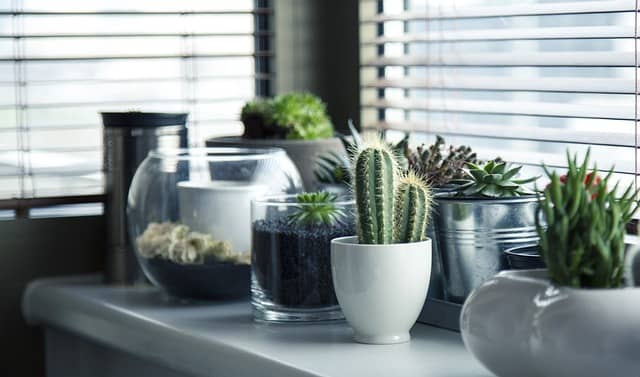Call: (915)365-1515
Email: info@natural-patterns.com
Call: (915)365-1515
Email: info@natural-patterns.com

8/1/2023
Written by Marwa Lake
Selecting the right pots is the foundation of successful potted plant care:
Opt for containers with drainage holes to prevent waterlogging and root rot. Choose pots that are appropriate for the size of the plant and allow room for growth. Consider the material of the pot (e.g., clay, plastic, ceramic) and how it affects moisture retention.
The soil you use plays a crucial role in your plant’s well-being:
Use a well-draining, nutrient-rich potting mix suitable for the type of plant. Consider mixing in perlite or vermiculite to improve drainage and aeration.
Proper watering is essential for potted plant health:
Water when the top inch of soil is dry to the touch, but avoid letting the plant sit in standing water. Adjust watering frequency based on factors such as plant type, humidity, and season. Water the soil directly rather than the plant’s leaves to prevent diseases.
Understanding your plant’s sunlight needs is vital:
Place sun-loving plants in areas with adequate sunlight exposure, and shade-loving plants in less sunny spots. Be cautious of intense direct sunlight, as it can scorch leaves and dry out the soil quickly.
Potted plants benefit from regular feeding:
Use a balanced, water-soluble fertilizer according to the plant’s specific needs. Fertilize during the growing season (spring and summer) and reduce or stop during the dormant period.
Regular maintenance keeps your potted plants looking their best:
Trim dead or yellowing leaves to encourage healthy growth and prevent disease spread. Remove spent flowers (deadheading) to redirect energy toward new growth and blooms.
Potted plants eventually outgrow their containers:
Repot your plant when you notice roots becoming pot-bound or the soil unable to hold moisture. Gently loosen and trim root ball before transferring to a larger pot with fresh soil.
Potted plants can still fall victim to pests and diseases:
Inspect plants regularly for signs of infestations or unusual discolorations. Use organic or chemical treatments when necessary, ensuring to follow instructions carefully.
Consider the environment your potted plants are in:
Protect plants from extreme temperature fluctuations, drafts, and sudden changes in humidity. Group plants with similar environmental needs together to create microclimates.
Consistency and observation are key to successful potted plant care:
Develop a routine for watering, fertilizing, and general maintenance. Observe your plants closely, responding to any changes promptly.
Caring for potted plants is a rewarding endeavor that lets you connect intimately with nature on a smaller scale. By providing the right containers, soil, light, and care, you create an environment where your plants can thrive and bring beauty to your space. With patience, attention, and a bit of trial and error, you’ll discover the joy of nurturing potted plants and reaping the many benefits they offer – from improved air quality to a deeper appreciation for the wonders of the natural world.